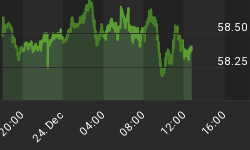A report released this week by the Center for Responsible Lending, a Durham, N.C. based research group, predicted that 1 in 5 sub-prime mortgages originated in the past two years would end in foreclosure. While most on Wall Street dismissed this survey as overly pessimistic, it actually represents a rather rosy outlook.
One of the report's deficiencies is that it fails to account for how the foreclosures it does expect will impact those loans that it regards as safe. A 20% default rate would put millions of homes back on the market, and would also inflict severe losses on sub-prime lenders, causing them to pull in their horns and tighten their lending standards. More inventory and higher rates will put more downward pressure on home prices. Many over-stretched borrowers, who made little or no down payment, will find themselves struggling to make mortgage payments on properties with negative equity. Higher rates and lower prices will also remove the cash out options that many borrowers expected would bail them out of ballooning adjustable rate payments.
Therefore, the secondary effects of the 1 in 5 sub-prime default rate will be a chain reaction of rising interest rates and falling home prices engendering still more defaults, with the added foreclosures causing the cycle to repeat. In my opinion, when the cycle is fully played out we are more likely to see an 80% default rate rather than 20%.
The main problem is that the majority of these loans were made to people who really cannot afford to repay them and were collateralized by properties whose true values were but a fraction of the loan amounts. Once the music stops and prices return to earth, borrowers who put little or no money down may decide to simply mail in their house keys rather than make additional mortgage payments. Why would anyone stretch to spend 40% of his or her monthly income to service a $700,000 mortgage on a condo valued at $500,000, especially when there are plenty of comparable rentals that are far more affordable?
In addition, even those who can comfortably afford to pay may choose not too. Basically, zero-down, non-recourse mortgages give borrowers a free put option should real estate prices decline. The bigger the drop, the more incentive there is to exercise. Rather than throwing good money after bad, borrowers could simply return their over-priced houses back to their lenders and buy one of their neighbor's deeply discounted foreclosures instead.
Also, the idea that sub-prime foreclosures will not affect the broader market is absurd. These loans simply represent the weakest links in the mortgage/housing chain. Once they break the entire chain falls apart. The added demand from these marginal buyers helped produce and sustain the bubble. Remove it and the bubble deflates. Also, falling home prices and rising interest rates effect every homeowner, and the temptation to walk away from an upside down mortgage is not restricted to sub-prime borrowers.
Don't wait for reality to set in. Protect your wealth and preserve your purchasing power before it's too late. Discover the best way to buy gold at www.goldyoucanfold.com, download my free research report on the powerful case for investing in foreign equities available at www.researchreportone.com, and subscribe to my free, on-line investment newsletter at http://www.europac.net/newsletter/newsletter.asp.
















